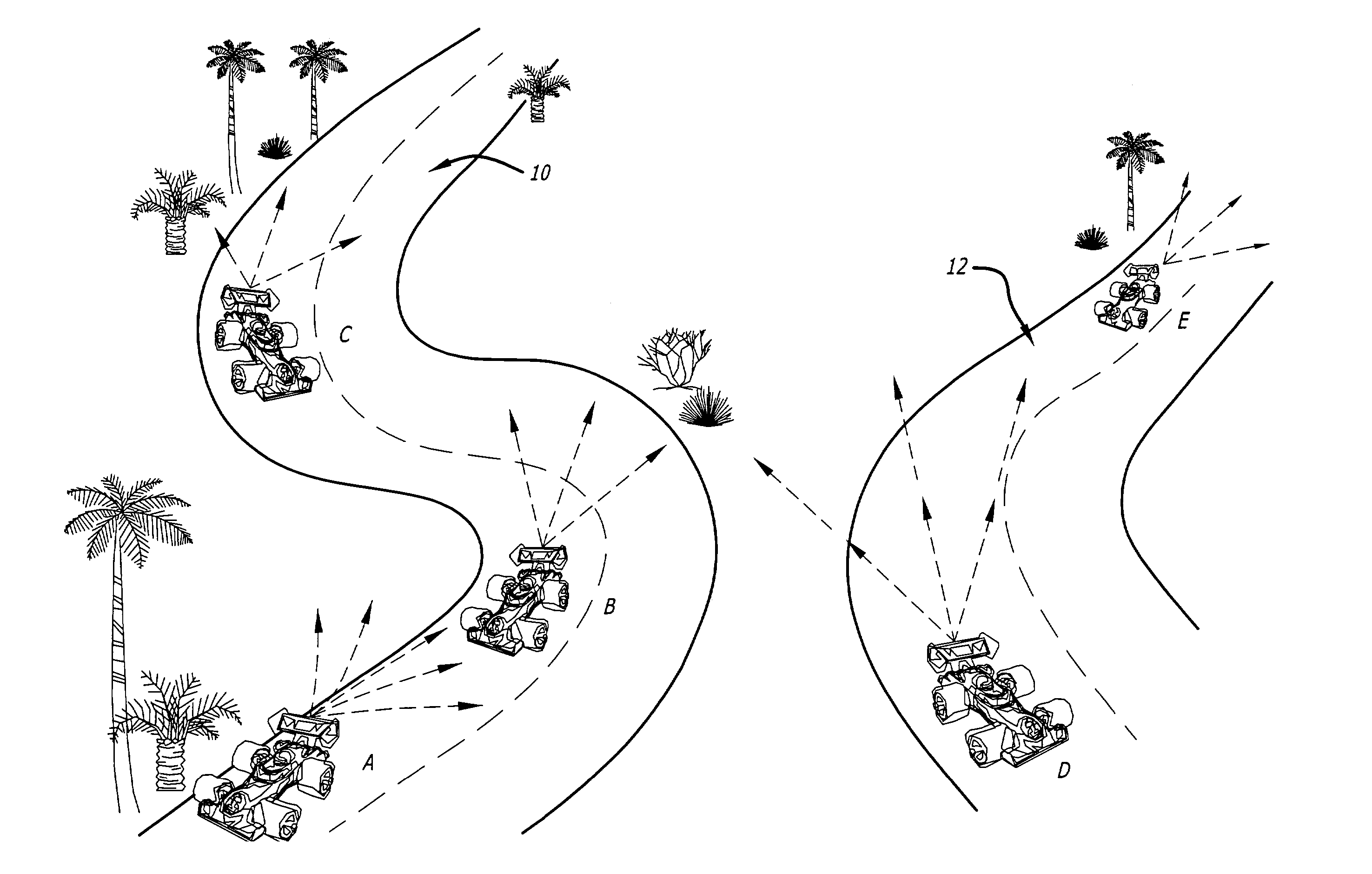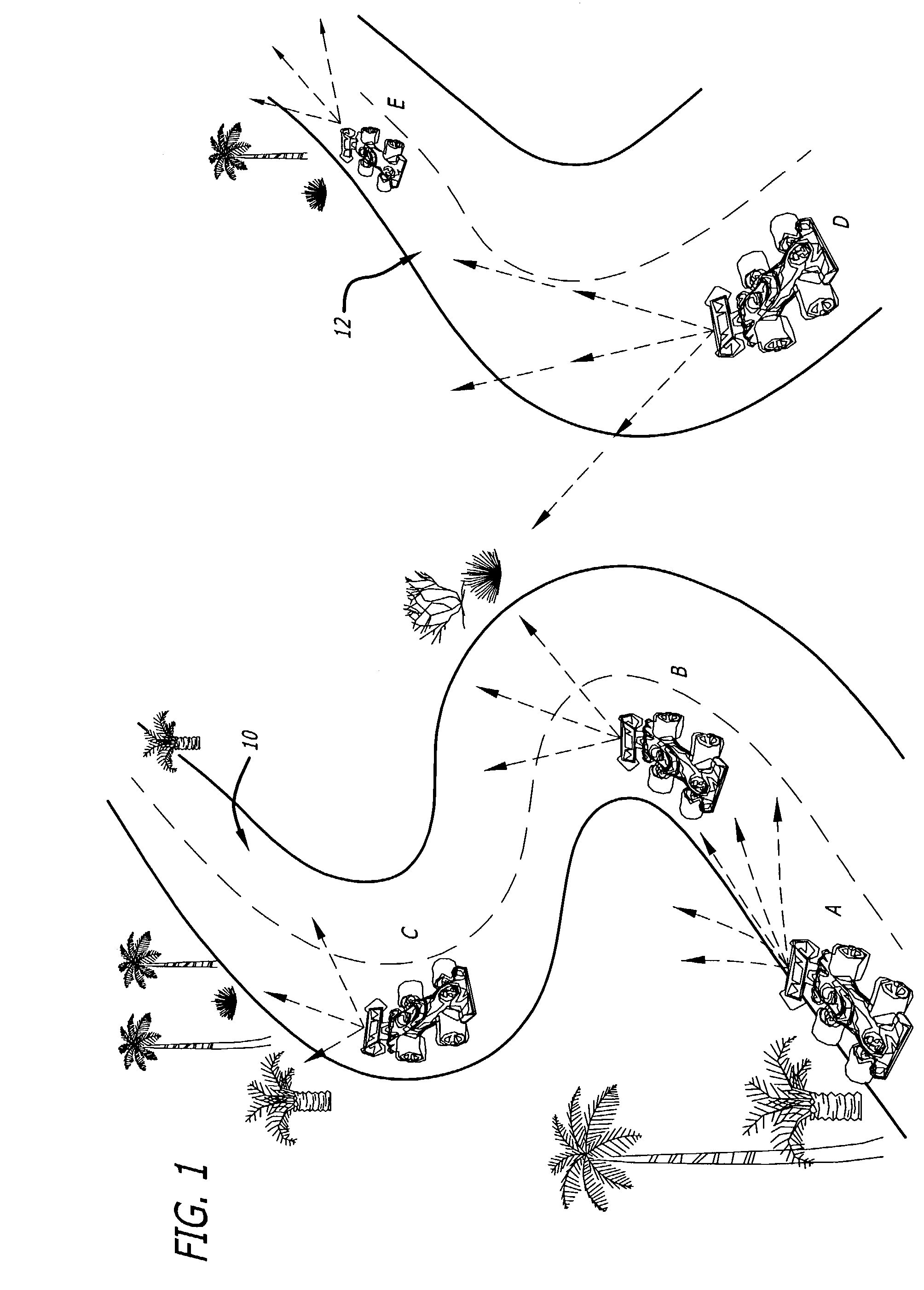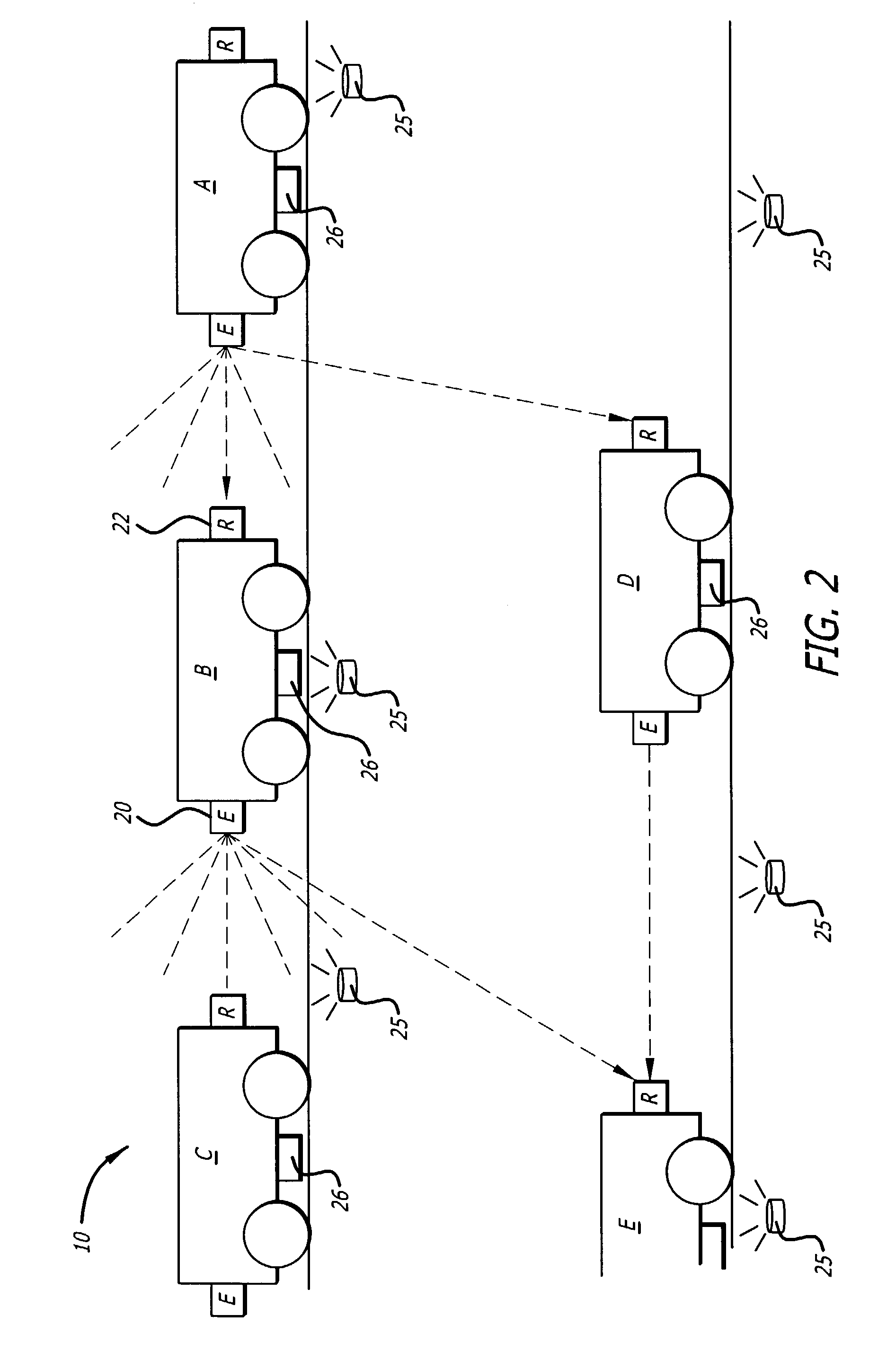System and method of optical data communication with multiple simultaneous emitters and receivers
a technology of optical data communication and multiple simultaneous emitters, applied in the field of optical networking, can solve problems such as errors in received data, and achieve the effect of reliable wireless communication
- Summary
- Abstract
- Description
- Claims
- Application Information
AI Technical Summary
Benefits of technology
Problems solved by technology
Method used
Image
Examples
Embodiment Construction
[0027]As mentioned above, one application for the optical data communication method of the present invention is to provide communications directly between vehicles for purposes of maintaining distance and required closing speed. In an exemplary embodiment of the present invention, a speedway ride system utilizes the optical data communication method of the present invention to communicate speed from each leading vehicle to the vehicle behind it so that the vehicles do not collide with each other.
[0028]The speedway racing system comprises a plurality of vehicles operated by guests traveling simultaneously on a plurality of tracks. It is desired to prevent guests from colliding with other vehicles, since collisions can cause injuries. Collisions can be avoided by ensuring that the speed of a vehicle is not sufficiently fast to catch up to the vehicle ahead of it and hit it. Such collisions can be detected and prevented if each vehicle knows the speed of the vehicle ahead of it, as wel...
PUM
 Login to View More
Login to View More Abstract
Description
Claims
Application Information
 Login to View More
Login to View More - R&D
- Intellectual Property
- Life Sciences
- Materials
- Tech Scout
- Unparalleled Data Quality
- Higher Quality Content
- 60% Fewer Hallucinations
Browse by: Latest US Patents, China's latest patents, Technical Efficacy Thesaurus, Application Domain, Technology Topic, Popular Technical Reports.
© 2025 PatSnap. All rights reserved.Legal|Privacy policy|Modern Slavery Act Transparency Statement|Sitemap|About US| Contact US: help@patsnap.com



